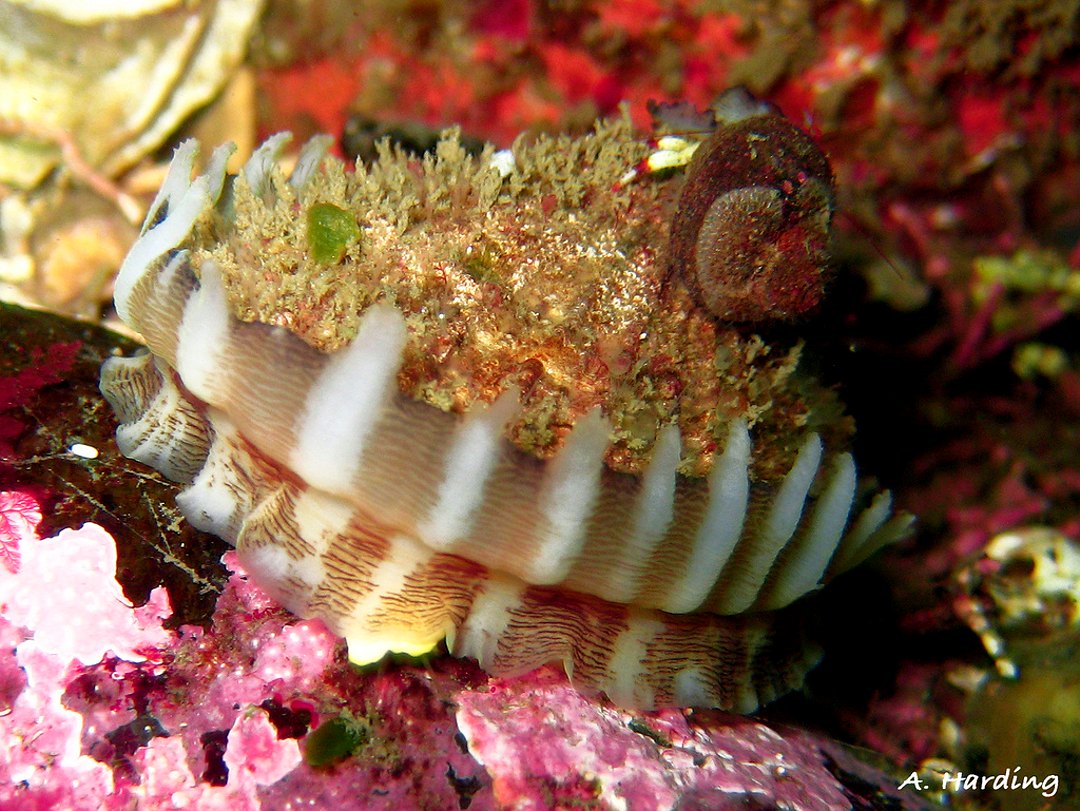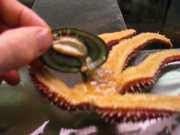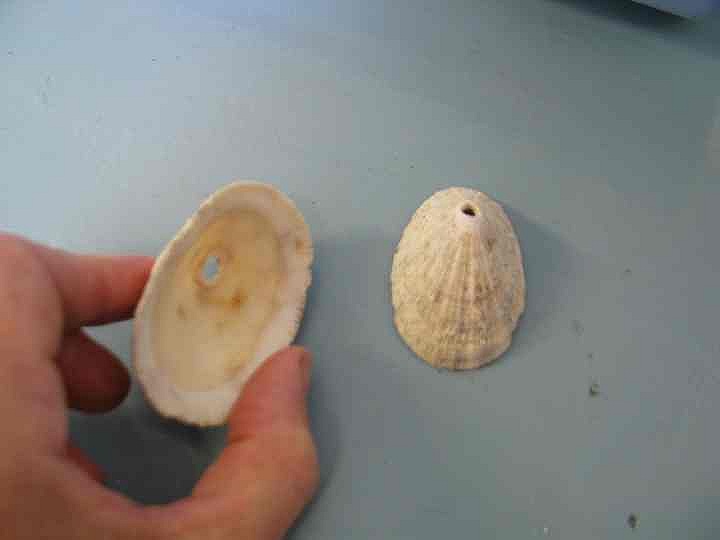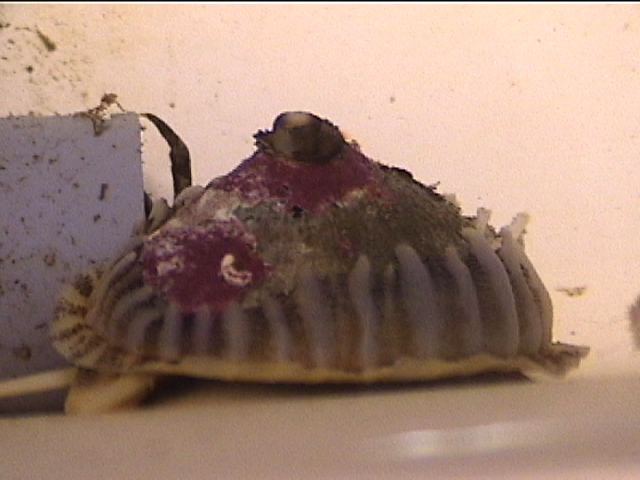Keyhole limpets have a distinctive mantle-covering response when they are approached by a predatory sea star such as Pycnopodia.sp
Physical Description:
it has a small oval opening at the top of its short, conical shell. Although the keyhole limpet superficially resembles “true” limpets, its soft anatomy reveals an important difference. True limpets draw water into their mantle cavity on the left side, pass it over a single gill and discharge it on the right side. Keyhole limpets draw water in both sides, where it flows over paired gills before flowing out through the “keyhole” aperture at the peak of the shell. Size: Length is about 75 mm
- The mantle deployed. photo by Adam Harding, 2010
- Painted Star eating a key-hole limpet.
- Stomach of sea star pulled away from the limpet body
- Shells of Diadora, showing the hole through the apex.
- An image from the video on the left which was made by an environmental systems class doing a lab on biotic associations
Global distribution:
The Rough Keyhole Limpet can be found anywhere in coastal regions from Afognak, Alaska, to Baja California. It is found primarily in low intertidal areas, and has been seen up to 40 feet subtidally in the south (Morris et al. 1980).
Habitat:
The Keyhole Limpet clings tenaciously on and under large rocks in the sub to low intertidal. They can also be found on large kelp stipes. Their strong foot allows them to thrive in some intertidal areas where turbulent wave action is prevalent.
Domain Eukarya
Kingdom Animalia
Phylum Mollusca
Class Gastropoda
SubClass Prosobranchia
Order Archaeogastropoda
Family Fissurellidae
Genus Diodora
Species aspera
Common Name: Key-hole limpet
Feeding: This particular limpet is an omnivorous grazer. It feeds by scraping rocks with its radula. Various bryozoans are its food of choice, but it also consumes algae, as well as some sponge species.
Predators:
Sea stars, the limpet responds by raising its mantle up over the outside of its shell, a behavior that may prevent the sea star from gripping the shell surface.
Reproduction:
Keyhole limpets have separate sexes, and sexually ripe individuals can be found during any season of the year. Eggs and sperm are released into the water in mass quantities and larval settlement ensues.
One interesting Fact: Recent studies suggest that this animal’s unique apical opening is not only associated with sanitation, but also plays an important role in inducing passive flow through the mantle cavity. In studies where the keyhole of Diodora aspera was blocked (either naturally or experimentally) no evidence of damage to the mantle cavity or associated organs was found. In these experimental trials, water entered ventro-posteriorly with respect to the gill tips, and exited over the head region (near the anus). The apical opening proved unnecessary as a means of waste removal. Researchers did find however, that the keyhole played an essential role in allowing water to flow passively through the mantle cavity. Thus, it is thought that this function of the apical opening may have been just as significant as its role in sanitation in terms of limpet evolution
References:
Wylam, B. 2001. “Diodora aspera” (On-line), Animal Diversity Web. http://animaldiversity.ummz.umich.edu/site/accounts/information/
Diodora_aspera.html.
Guide of Marine Invertebrates.- Alaska to Baja California
Daniel W. Gotshall.- Sea Challenges.
Monte Rey – California, USA 1994
| Other Members of the Phylum Arthropoda at Race Rocks |
and Image File |
 The Race Rocks taxonomy is a collaborative venture originally started with the Biology and Environmental Systems students of Lester Pearson College UWC. It now also has contributions added by Faculty, Staff, Volunteers and Observers on the remote control webcams. The Race Rocks taxonomy is a collaborative venture originally started with the Biology and Environmental Systems students of Lester Pearson College UWC. It now also has contributions added by Faculty, Staff, Volunteers and Observers on the remote control webcams.
October 2005- Claudia (PC yr 32) |





